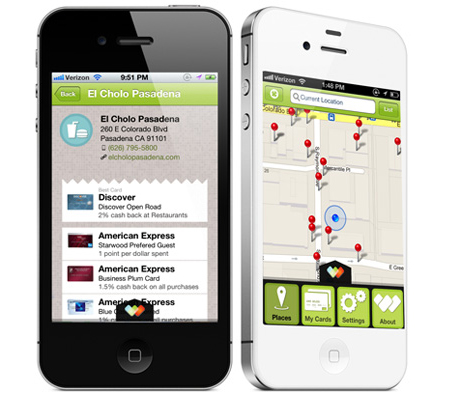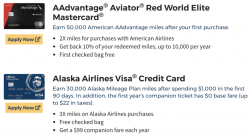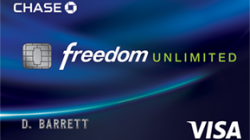
The Wallaby Card first came out on the scene earlier this year. The concept involves a digital wallet comprised of a user’s current bank-issued credit cards, but the selling point is the yet-to-be-unveiled physical card that links to this digital wallet, allowing one to replace most credit cards in their wallet with the singular Wallaby card. When you use the Wallaby Card for a purchase, their system automatically sends the transaction to the card which maximizes your rewards, whether it be miles, points, or cash-back.
Obviously, this is something that would be of interest to the points community. Many of us juggle multiple credit cards to maximize our rewards, whether it be by signup bonus, category bonus, or targeted spend bonus. Last week, I used my Chase Sapphire Preferred to book an award ticket; my Chase Freedom to pay a parking meter; my Citi Forward for the pizza I ordered; my Chase Ink Bold to fill up the gas tank; my American Express Platinum Card to access a lounge; and my Hilton American Express card for some vanilla-flavored medicine at CVS. While I find myself being able to keep track of each category bonus, it’s cumbersome to have to carry so many credit cards. For others, it’s tough to remember what card has what bonus categories, especially when some cards have rotating offers.
Late last month, Wallaby Financial released their iPhone app, the first step toward their full release. The app is still in somewhat beta, with some merchants and cards missing, but it gives a rundown of what the full experience will be soon. I contacted them about some omissions and the team responded swiftly to fix these issues. After some correspondence, I found out that the Wallaby office is actually in my neighborhood (right next to a favorite biergarten of mine!), so we were able to set up a chat about the card and what it might eventually become.
(In the interest of disclosure, Wallaby did buy me a $3 cup of coffee. The café in which we met insisted on a $5 minimum for credit cards, against the merchant terms — I missed out on between 15 and 25 ThankYou Points).
I met with Matthew Goldman, the CEO/Founder of Wallaby Financial, and the lead user experience designer, Kenny Chen. We got to talking about what the card would eventually do and what my feedback as a self-proclaimed points junkie would be. Matthew described the story of how he was filling up on gas one day with his Starwood American Express when the monitor above the pump began advertising Chase Freedom’s quarterly 5% cash-back for — you guessed it — gas stations. He told me how he actually had a Freedom card but could never keep up with the bonus categories, and tried to figure out how much he lost each year in rewards. How many times have we all been there?
Goldman mentioned his stint at nearby GreenDot (those green prepaid cards next to the Vanillas … that’s GreenDot), so he’s well-versed in what happens on the back-end after you swipe your card. He wouldn’t delve into the details behind the card (there are some competitors out there), but he described how it would take less than a second for Wallaby’s system to analyze the transaction and send it to the correct credit card for payment. In theory, this seems like a brilliant idea and one that solves so many #FirstWorldProblems for card users, though there are challenges involved.
It was hinted that the major reason why the card isn’t out yet is because of strict financial laws that the company has to deal with. Privacy and security issues are always paramount in this field. There was mention of the option to keep track of balances a la Mint.com, especially to guard against “over-using” a certain card (like stopping use of a card once you hit a specified spend threshold), as well as delineating benefits that would be more valuable than the points earned, such as sending all car rentals to a person’s Chase United MileagePlus Explorer Visa, given its Primary CDW coverage.
There’s also the issue of compliance from the banks that issue the actual rewards credit cards, of allowing an outside vendor to drive transactions to and away from their product. For the points community, we can liken this to the challenges AwardWallet has faced with American Airlines, Delta Air Lines, and Southwest Airlines over tracking balances in their rewards programs. A few folks have claimed that banks won’t like this and may block off systems like Wallaby’s since they prefer people to have their own branded credit card in the wallet for use everywhere. Frankly, I disagree. For one, mobile apps like Wallaby’s are already out on the market, giving consumers the information they need to decide which card to use for a particular vendor. The Wallaby Card itself is simply a convenience tool that allows users to automate their decision-making on which rewards card to use. If anything, it should be an incentive to card issuers to enhance their rewards to compete with other cards.
Another major issue facing Wallaby is how merchants code their transactions when it comes to bonus categories. Visa allows one to manually search a merchant for their ID but apparently that’s a closed source. Also, the category a merchant may have with Visa may not match what they have with American Express. On top of that, many merchants, both large and small, have merchant IDs that don’t really match what they sell. The coffee shop/wine bar down the street from where we met actually showed up as a gas station on my Chase Freedom (5.1x Ultimate Rewards last summer on wine? Score). Some travel agencies I’ve dealt with have merchant IDs that don’t match travel at all, which could potentially be a loss of thousands of points if you use the wrong credit card.
For now, it seems like crowd-sourcing is the short-term solution to these problems, with folks contacting Wallaby about errors or omissions in the iPhone app — my feedback involved Starbucks not being correctly classified as a restaurant/dining place. Goldman also told me that he got a lot of feedback that some pharmacies were missing … our conversation briefly drifted to the topic of prepaid cards (in case you’ve been living under a wifi-less rock or on United airplanes, Vanilla Reloads can be bought at certain CVS/Walgreens locations with Hilton HHonors branded credit cards that earn 6x points, or with gift cards that you buy at office-supply stores with Chase Ink for 5x points). He mentioned that our group of “hobbyists” is really in the minority and that the research shows most users having just under 4 credit cards, which is less than the number of cards I applied for in one day last week. Yet I’m sure that people of our nature will be early adopters of this product, and that there needs to be a way for the eventual full release to be easy for the layman to operate, yet robust and customizable for “the power user.”
The most important customizable issue seems to be about point values. Currently, Wallaby shows the Starwood American Express as the default option for most merchants since they set Starpoints as having a default value of 2.3 cents, beating out 2% cash back cards. Of course, we all have different goals for our points. Some people value HHonors points as high as 0.8 cents, so 3x HHonors points at 2.4 cents would beat 1x Starpoint at 2.3 cents. On the other hand, some of us value HHonors points closer to 0.5 cents each, so 1x Starpoint beats 3x HHonors (1.5 cents) for us. Matthew told me that the ability to assign point values should be in the final release, and I mentioned that it could probably require turning on an “expert mode” like United.com has for inventory views. Novice users may not really understand the value of their points, although points like Ultimate Rewards can have minimum values assigned to them.
It was around the end of our conversation when Matthew really let his inner point-user out, asking me what I thought about temporary preference, like when I really want a certain type of point despite its inferior mathematical value to another. To give an example, I am currently flush with Ultimate Rewards points thanks to the many flavors of cards, their large signup bonuses, and lucrative spending categories. My redemption value with Ultimate Rewards consistently beat 2 cents each, yet I’m earning them faster than I can realistically burn and am currently indifferent to them at 1.25 cents (their minimum value for travel). I have since shifted a lot of spending over toward cash-back type cards with more liquid rewards currencies. We discussed some options regarding this, but it gave me the idea that the brains behind Wallaby know what they’re doing regarding point values.
The iPhone (and soon, Android) app is free on the App Store, and the card will carry a fee of around $50 when it hopefully arrives next year. If we average out the value of points at about a penny each, the system would have to earn us an incremental 5,000 points per year to break even. I’m personally pretty good about being able to use the best credit card at a merchant by myself, but I find value in being able to put my wallet on a diet and potentially carry only the Wallaby card (though it won’t replace cards you need to physically have on you for certain benefits, like the American Express Platinum Card for lounge access).
Instead, this might be the perfect card for significant other social security numbers spouses who don’t understand our frustrations when they use the Sapphire Preferred at the grocery store or the HHonors American Express at lunch. If anything, $50 is a small price to pay for lowered blood pressure and fewer nights on the couch.
You can sign up to be on the list to get a Wallaby Card (Amol’s link), follow their updates on Twitter, and download the iPhone app. Android users can expect an app soon.




